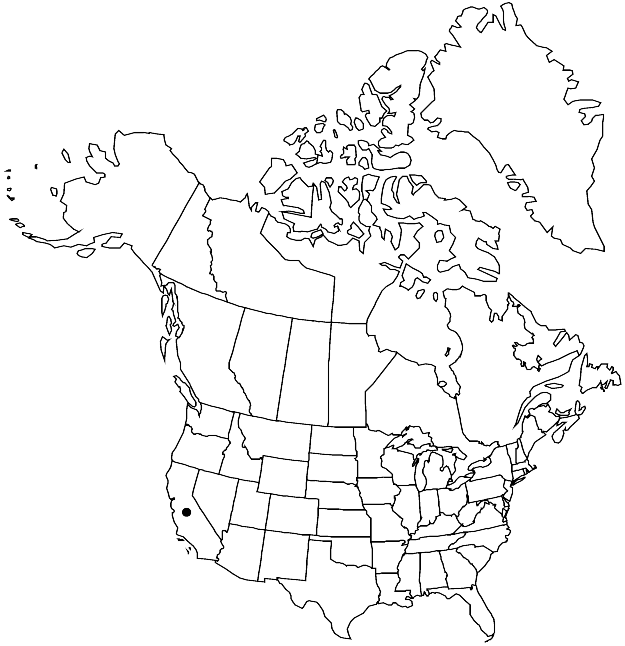Thysanocarpus conchuliferus
Bull. Torrey Bot. Club 13: 218. 1886.
Stems 0.5–1.5 dm. Basal leaves: blade oblanceolate to elliptic, 1–2.5 (–3.5) cm, margins often pinnatifid, sometimes sinuate-dentate, surfaces glabrous. Cauline leaves: blade lanceolate to narrowly elliptic, or nearly linear, widest near base or middle, base auriculate-clasping, auricles extending around stem (at least some leaves). Racemes: internodes 0.7–1.5 (–2) mm in fruit. Fruiting pedicels stiffly divaricate-ascending to slightly recurved, (proximal) 3.5–6.5 mm. Fruits cymbiform, (wings strongly incurved toward flat side of fruit); valves glabrous; wing with spatulate lobes (these sometimes joined distally, 0.25–0.4 mm wide at narrowest), rays absent or indistinct.
Phenology: Flowering Mar–Apr.
Habitat: Rocky ridges, slopes, cliffs, canyons
Elevation: 50-500 m
Discussion
Of conservation concern.
Thysanocarpus conchuliferus is known from Santa Cruz Island, where T. laciniatus and T. curvipes also occur. Rarely, specimens of those two species will have slightly incurved wings, or fruits folded in pressing. In such cases, the very dense, short inflorescences of T. conchuliferus provide a useful distinguishing feature.
Thysanocarpus conchuliferus is in the Center for Plant Conservation’s National Collection of Endangered Plants.
Selected References
None.
Lower Taxa
"elongated" is not a number."thick" is not a number."dm" is not declared as a valid unit of measurement for this property.
